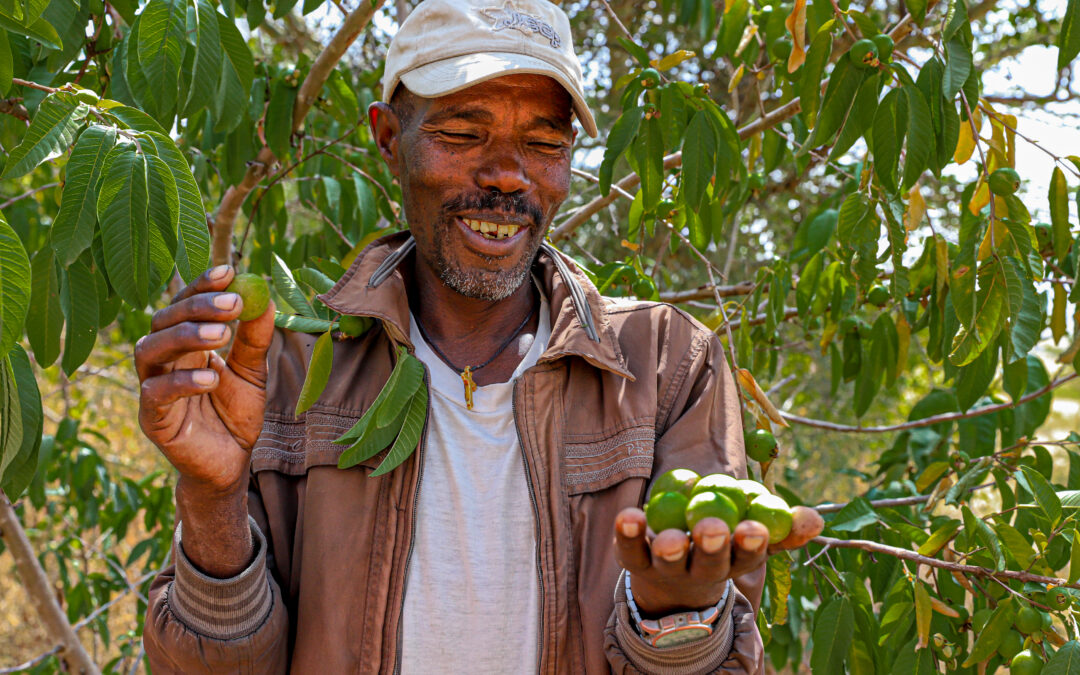By Regreening Africa – CRS Ethiopia
According to elders in Sire Woreda in Ethiopia, Ibsata Huduga Kebele’s landscapes were once evergreen, with dense trees and grasslands, making it difficult to walk inside the forest. However, unsustainable land use, primarily deforestation for charcoal, timber, and fuelwood, as well as overgrazing, have degraded the evergreen landscape into bare land. Deforestation on hillsides has resulted in soil loss and flooding downstream, causing cropland damage. The degradation in the upstream area was affecting communities in the downstream area.
“Before the intervention, the landscape was severely degraded and became barren; runoff flowed directly into farmlands and homes downstream, destroying field crops and property.” To reduce their chances of being washed away, families used to take turns sleeping. Bisrat Tesfaye, Natural Resource Management Officer for Meki Catholic Secretariat (MCS), a Catholic Relief Service (CRS) implementing partner, explains.
In 2013, the local government decided to rehabilitate the degraded area by involving communities affected downstream and interested in rehabilitating the area, particularly women and youth who did not own land. 45 women and youth came together as a result of this initiative to rehabilitate the area. And the enclosure for the Merfie area was built.
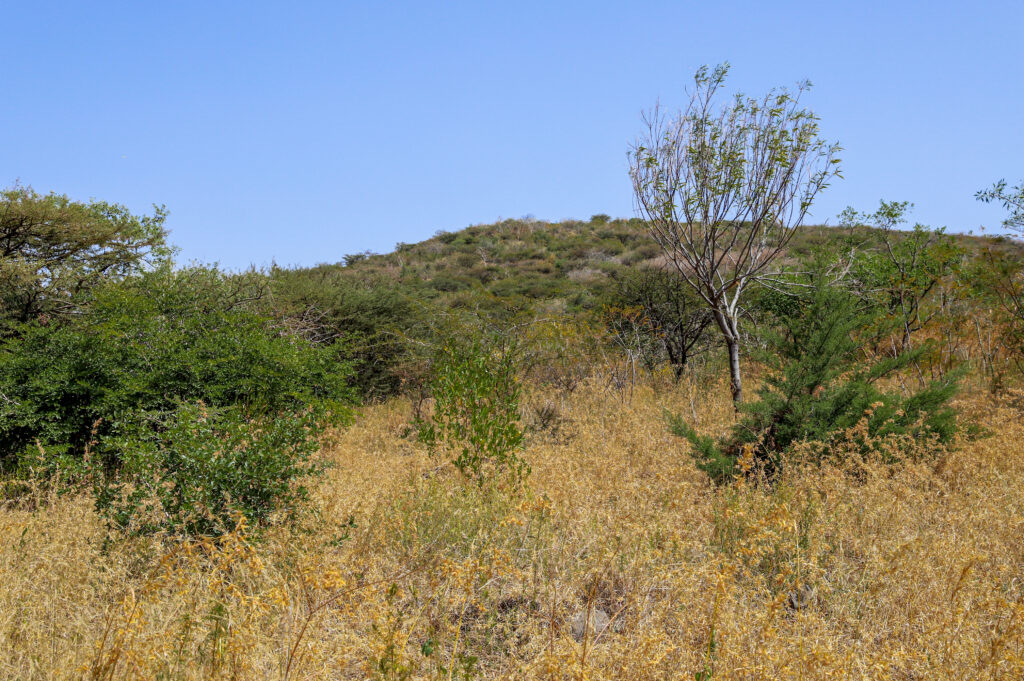 The Merfie area exclosure in Sire, Ethiopia. Photo: CRS Ethiopia
The Merfie area exclosure in Sire, Ethiopia. Photo: CRS Ethiopia
An area exclosure is an area (typically a degraded hillside or grazing land) that is closed to human and livestock interference, where soil and water conservation activities are undertaken, natural regeneration is assisted, and enrichment planting is used to restore the degraded land. The area exclosure approach has been used extensively in Ethiopia for many years and is one of the government’s preferred methods for rehabilitating degraded communal lands and forests. As a result, the area exclosure approach is well known in the communities.
With the support of the local government, the group built soil and water conservation structures and planted tree seedlings. During the first five years of the exclosure’s existence, the group harvested and sold grass using the cut-and-carry method in order to generate income. However, as the trees grew, the growth of grass began to decline due to the shade effect of trees and a lack of proper tree management practices.
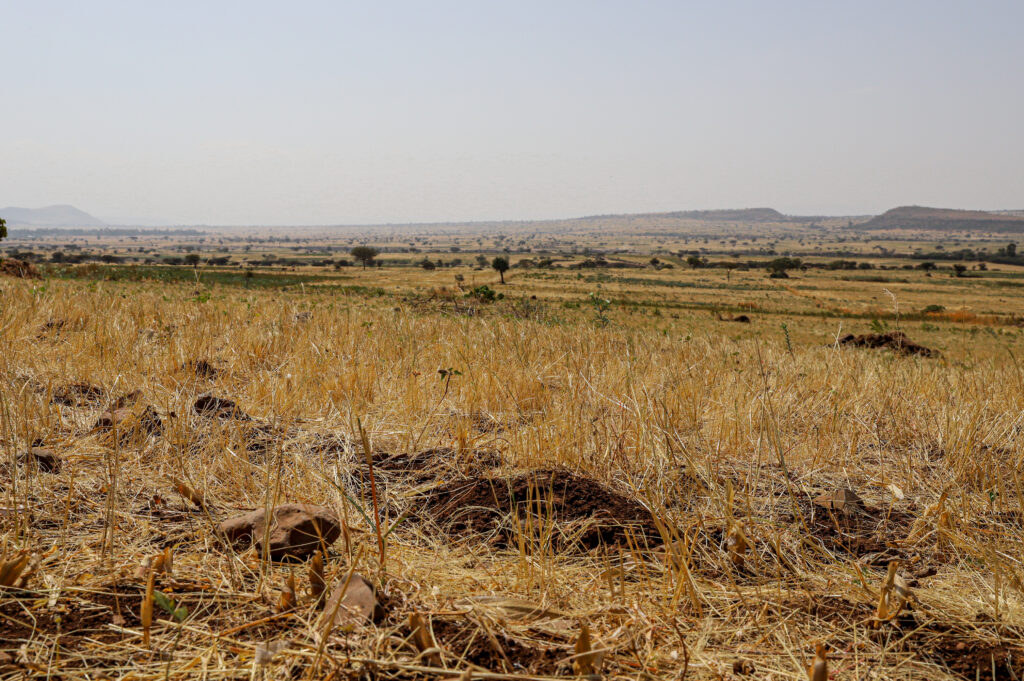 Grass growing in Merfie area exclosure in Sire Woreda, Ethiopia. Photo: CRS Ethiopia
Grass growing in Merfie area exclosure in Sire Woreda, Ethiopia. Photo: CRS Ethiopia
With this new challenge, the local government was not willing to allow the group to implement silvicultural practices due to a fear of overexploitation and poor management. As a result, the exclosure could not be sustained owing to a lack of group management, limited access to the exclosure’s resources, a lack of meaningful benefits from the exclosure, and a lack of technical support from the relevant government sector. As the benefits of the exclosure dwindled, the group lost hope and began to disintegrate.
In 2019, when the Regreening Africa project began implementation in the Sire Woreda, they learned about the exclosure through engagement with the local authorities. In consultation with the local government and the agriculture office of the woreda, the project decided to recall the group members and continue their work.
Regreening Africa, through the Catholic Relief Services (CRS) conducted a series of training sessions with the group on tree management practices, Farmer Managed Natural Regeneration (FMNR) inside exclosures, and incentive-based restoration practices such as selling grasses, applying silvicultural practices (pruning, pollarding), and using it as firewood, forage, and timber among members, as well as sustainable resource utilisation. The group’s bylaws were revised, and management and business plans were created. Furthermore, a visit to a successful area exclosure in the neighbouring district of Boset was organised for the group. The groups began to actively manage the exclosure as a result of the experience-sharing visit and capacity-building provided to them.
Continuous capacity building, follow-ups, and supervision with the group and local government resulted in the adoption of regreening and silvicultural practises, resulting in increased vegetation and grass growth in the enclosure. Restoration practices, such as enrichment planting and FMNR, helped the area recover quickly and motivated farmers by providing a plentiful supply of grass and firewood. Furthermore, increased vegetation cover in the exclosure area reduced soil erosion and sedimentation downstream. The group sold grass through a cut-and-carry system to feed cattle and cover roofs. On average, the sales brought in 40,000 Ethiopian Birr (754 USD) per year.
To diversify the group’s livelihoods, beekeeping activities were also introduced in the rehabilitated exclosure. Following beekeeping training, the project provided the group with 13 modern beehives and accessories.
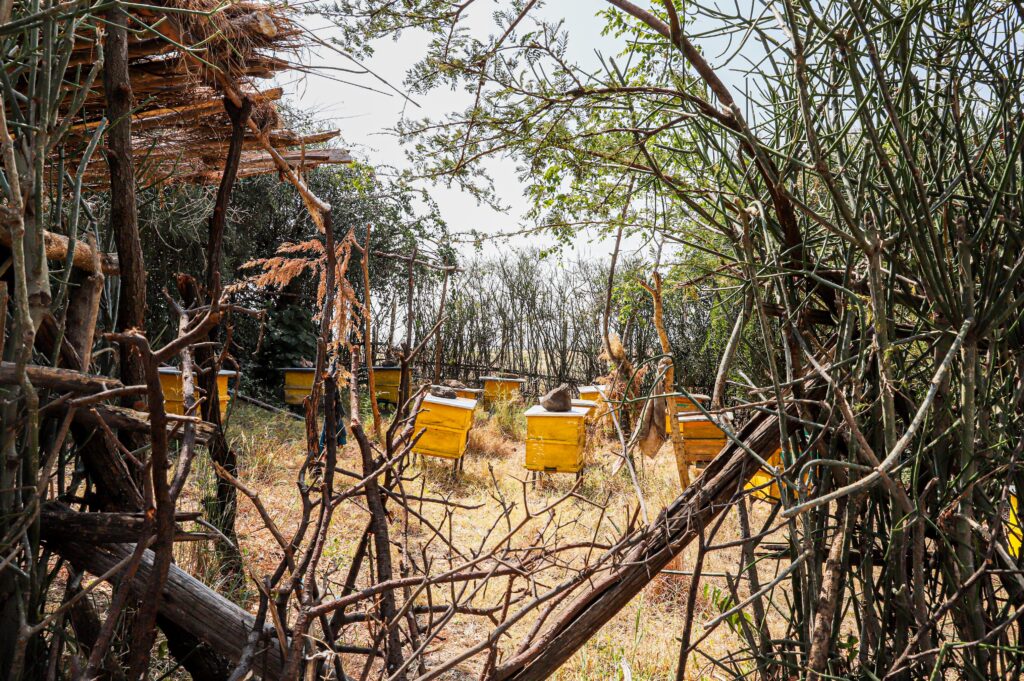
An apiary in the Merfie area exclosure in Sire, Ethiopia. Photo: CRS Ethiopia
In 2022, the group harvested 70 kg of honey. They did not sell the honey, but instead shared it amongst themselves. Traditionally, it is believed that the first harvest represents the beginning of success, and thus it should be distributed to members of the community rather than sold. And that is precisely what they did in anticipation of further success. The group also hopes to receive additional training on modern beekeeping from honey value chain researchers, with CRS providing production materials such as honey extractors, wax printers, and protective clothing.
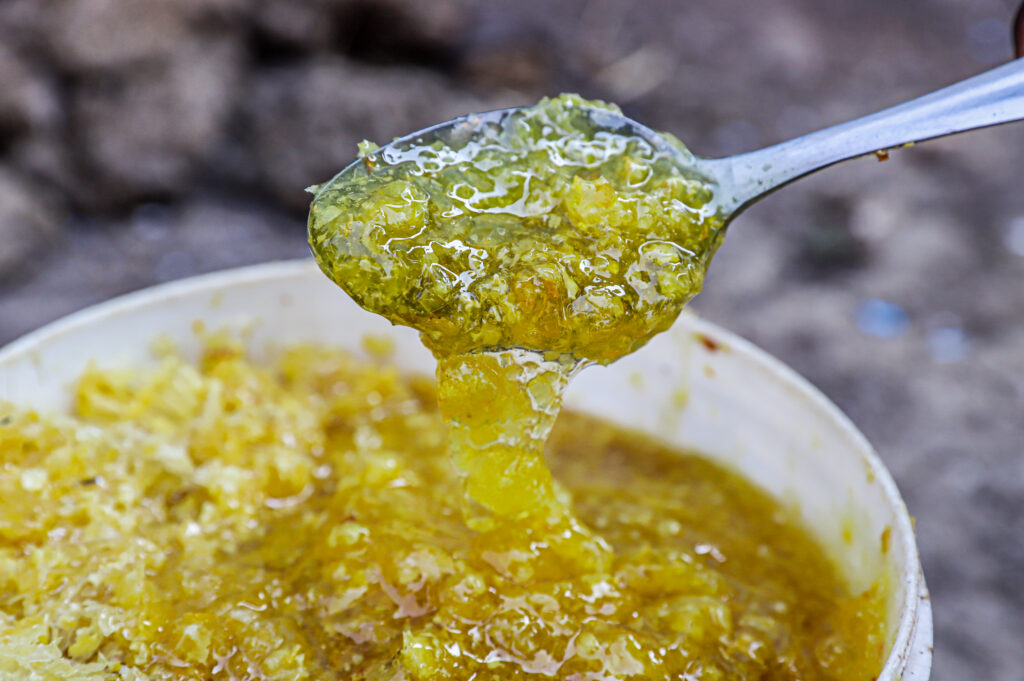 The community harvested about 70 kg of honey from the Merfie area exclosure. Photo: CRS Ethiopia
The community harvested about 70 kg of honey from the Merfie area exclosure. Photo: CRS Ethiopia
Reduced soil erosion and flooding downstream, as well as incentives such as good grass production for selling and foraging, a consistent source of firewood and timber from tree management practices (FMNR), and wild fruits received by the group from the exclosure, motivated the communities to actively participate in managing the exclosure.
Exclosures increase vegetation cover, increase species diversity, reduce erosion, regenerate lost species, and create jobs. Furthermore, restoration activities were observed to strengthen community cohesion, unity, and peace throughout programme operations. Exclosures provide significant environmental and economic benefits when managed in a participatory manner.
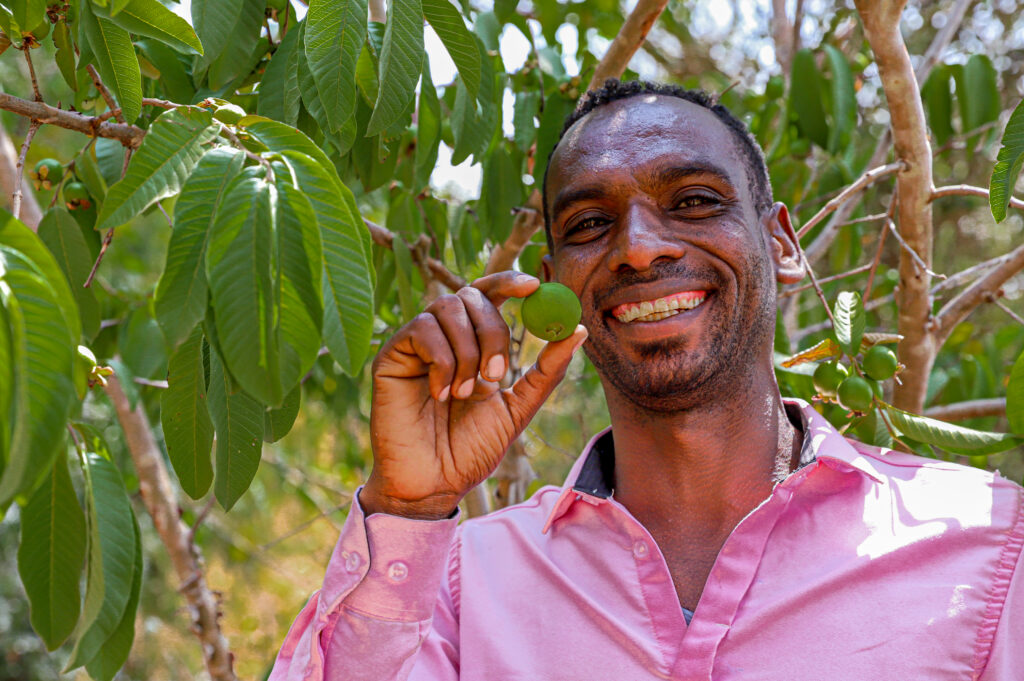 A community member holds a guava fruit that grows in the Merfie area exclosure. Photo: CRS Ethiopia
A community member holds a guava fruit that grows in the Merfie area exclosure. Photo: CRS Ethiopia
Communities are beginning to recognise the importance of tree preservation and landscape restoration as long-term investments in their livelihoods and resilience.
Regreening Africa is a five- and half-year programme (2017-2023) funded by the European Union that seeks to improve livelihoods, food and nutritional security, resilience to climate change, and ecosystem services through evergreen agriculture. In Ethiopia, the programme is implemented by a consortium of international NGOs, including Catholic Relief Services (CRS) as the country lead and World Vision Ethiopia (WVE) as implementing partners with technical support provided by World Agroforestry (ICRAF).
The Regreening Africa Programme in Ethiopia’s ultimate goal is to foster a massive, sustained landscape restoration movement with widespread adoption. The project has built on the successes of existing restoration programmes, laying the groundwork for a nationwide scale-up.
This story was produced with the financial support of the European Union. Its contents are the sole responsibility of Regreening Africa and do not necessarily reflect the views of the European Union.

